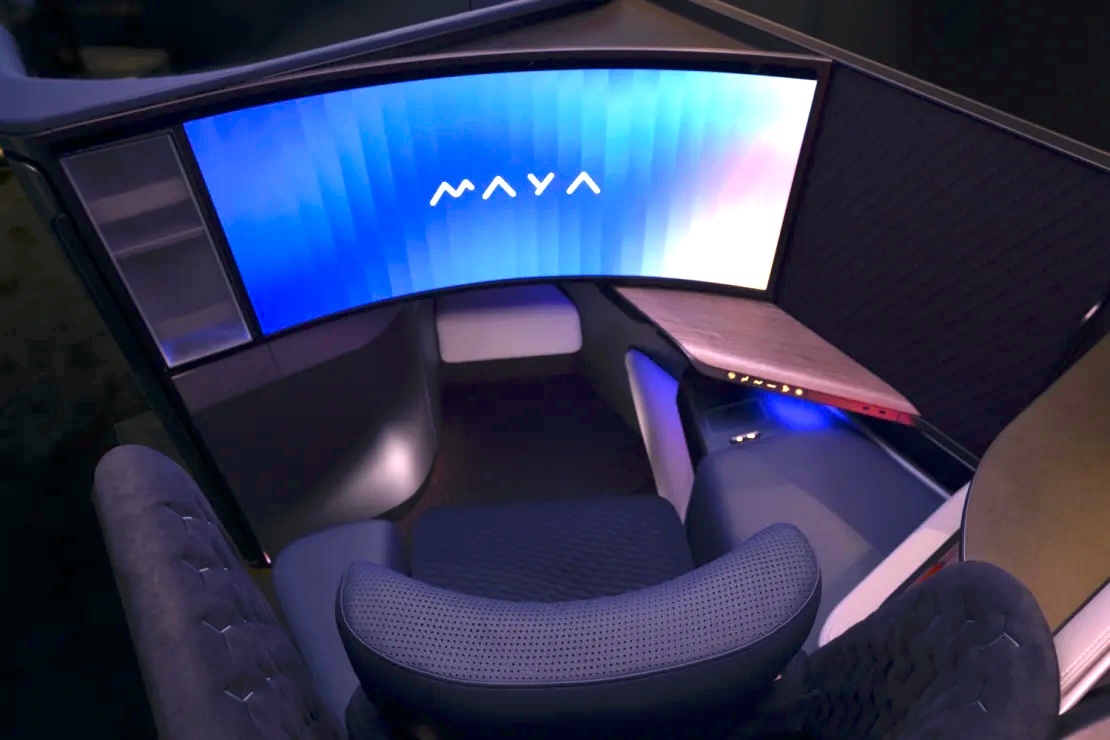Airlines are replacing outdated seatback screens with MAYA’s 45-inch OLED displays, offering a cinema-standard, immersive inflight entertainment experience.
While business-class food offerings just ain’t what they used to be and lie-flat beds are fast becoming an endangered species, it seems that one aspect of pointy-end travel is thankfully receiving a much-needed upgrade: your in-seat entertainment system.
In an era where many of us carry 4K screens in our pockets, the outdated seatback screens on aeroplanes often feel far from adequate, a relic from a bygone era. Even the priciest seats on a flight usually feature screens drastically inferior to those on a modern smartphone. Enter Collins Aerospace and Panasonic Avionics, who have partnered up to potentially revolutionise inflight entertainment with their cutting-edge concept: MAYA.
Curated news for men,
delivered to your inbox.
Join the DMARGE newsletter — Be the first to receive the latest news and exclusive stories on style, travel, luxury, cars, and watches. Straight to your inbox.
The MAYA Concept
MAYA — a clever little acronym that stands for “Most Advanced Yet Achievable,” — represents a pretty significant leap forward in passenger entertainment experience. The new business class seat design integrates an Astrova Curve 45-inch ultra-wide, ultra-high-definition OLED display, promising passengers a cinema-standard viewing experience at 30,000 feet. The screen is around three times larger than current business-class offerings and boasts an Ultra-Widescreen CinemaScope (21:9) display format, usually reserved for old-school cinemas.

The MAYA screen also has the capacity to sync with personal devices and includes the option of an advanced headphone-less audio system, enhancing the inflight experience even further. Andrew Masson, Vice President of Product Management and Strategy at Panasonic Avionics, made their aim clear:
“[To create] the most immersive experience for the passenger.”
Transforming Inflight Entertainment
Collins and Panasonic’s concept made waves at the Aircraft Interiors Expo (AIX) in Hamburg, Germany where it debuted last week. Industry insiders heaped praise on the product, hailing it as a significant advancement in premium travel that aligns with the long-neglected needs of modern passengers. Masson emphasized that while the screen is a “cinematic centrepiece” of the MAYA design, it’s not just for movies. Passengers can also use the screen to order meals, view maps, and connect their personal devices.
Despite its impressive features, some passengers might argue that the screen’s size is overwhelming, especially if they don’t spend their flights watching movies. However, for those who relish catching up on films during flights, MAYA offers an undeniable allure. DMARGE also wonders how much in-cabin light pollution these screens could create for passengers who want some shut-eye…

A far more pressing concern in today’s rapidly evolving tech landscape, however, is product obsolescence. On this, Masson assured visitors that the screen is “upgradable over time” and built on a “sustainable technology path,” minimising the risk of it becoming outdated quickly. How true that turns out to be — and how ready airlines will be to allow (and pay…) for these constant upgrades remains to be seen.
Currently, MAYA remains a concept, with specific details about production and implementation still under development. Nevertheless, the overwhelmingly positive feedback from airlines at AIX bolsters confidence in its future roll-out.
Gone are the days of squinting at spy thrillers or even resorting to your phone for high-resolution viewing vibes; big TVs have finally made it to the stratosphere.

